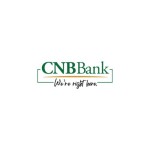When it comes to financing your business, choosing the right option can be just as important as running day-to-day operations. For many business owners in the USA, the main two options are business loans and lines of credit. On the surface, they might sound similar since both provide access to capital. However, they work very differently, and each comes with unique advantages and considerations depending on your needs.
If you’re considering growth opportunities, managing cash flow, or covering unexpected expenses, understanding the clear difference between a loan and a line of credit is the key to making smarter financial decisions.
What Is a Business Loan?
A business loan is a traditional financing option where a bank provides a lump sum of money upfront. The borrower agrees to repay the loan via fixed monthly payments that include interest over a specific timeframe (the “term”).
Common uses for business loans include:
- Purchasing equipment or vehicles
- Expanding office or retail space
- Financing large-scale renovations
- Funding a one-time project with predictable costs
Benefits of business loans:
- Structure and predictability – Fixed interest rates and repayment schedules provide stability.
- Longer repayment terms – Allows businesses to spread costs over years.
- Larger financing amounts – Suitable for significant investments like property or heavy machinery.
This structured borrowing approach suits businesses with well-defined, one-time financial needs.
What Is a Business Line of Credit?
A business line of credit (LOC) works more like a credit card. Instead of one lump sum, the bank provides access to a set credit limit. You can borrow, repay, and borrow again as needed, paying interest only on the amount actually used—not the entire limit.
Common uses for business lines of credit include:
- Managing seasonal cash flow gaps
- Covering short-term supplies or payroll
- Emergency expenses or delayed invoices
- Funding smaller, recurring projects
Benefits of business lines of credit:
- Flexibility – Funds are available whenever you need them.
- Interest savings – You pay interest only on the borrowed amount.
- Reusable credit limit – Helps maintain ongoing working capital.
This revolving access to cash is ideal for businesses with variable expenses or unpredictable revenue streams.
Loan vs. Line of Credit: Key Differences
Factor
- Disbursement
- Repayment
- Interest
- Purpose
- Best For
Business Loan
- Lump sum upfront
- Fixed monthly payments
- Charged on the full amount
- Long-term investments, large purchases
- Planned projects with set costs
Business Line of Credit
- Ongoing access up to pre-set limit
- Flexible repayments (minimums apply)
- Charged only on funds used
- Short-term expenses, cash flow support
- Variable needs and recurring expenses
Which Option Should You Choose?
The best choice depends on your business goals, cash flow situation, and risk tolerance.
- Choose a loan if:
- You need a significant one-time amount for a major purchase or project.
- You prefer fixed repayment plans and predictability in finances.
- The expense is clearly defined (e.g., buying property, heavy equipment, or expanding facilities).
- Choose a line of credit if:
- You regularly need short-term funding to manage cash flow.
- Your income or expenses are seasonal or unpredictable.
- You want backup funds for emergencies or opportunities.
Both options often complement each other. Many businesses use long-term loans for big investments while maintaining a line of credit to manage day-to-day fluctuations.
How Your Business Location Can Influence Your Choice
Each market has its own quirks. For example, a small retail business in a community setting might prefer a line of credit to handle busy and slow seasons, whereas a mid-sized manufacturer might need a large loan to purchase machinery. Businesses searching for business banking Hagerstown options will discover that local financial institutions understand these regional cash flow trends and tailor products accordingly.
Questions to Ask Before Deciding
- What is the total cost of borrowing? (Including interest and fees)
- How often will I need access to funds?
- Do I prefer predictable payments, or flexible borrowing power?
- Is my expense one-time or ongoing?
- Can I manage repayments if revenue drops unexpectedly?
Answering these questions provides clarity and helps match the right financial product to your needs.
Final Thoughts
The choice between a loan and a line of credit is not about which is better overall—it’s about which is better for your business situation. Loans provide structure and stability for long-term, upfront needs, while lines of credit deliver flexibility and revolving access to cash for regular or unpredictable expenses.
When deciding between the two, it helps to work with a banking partner who understands both your business and your community. For businesses across the USA who want personalized guidance, support, and tailored options, CNB Bank provides trusted solutions that make managing growth, cash flow, and opportunities simpler and smarter.






Comments